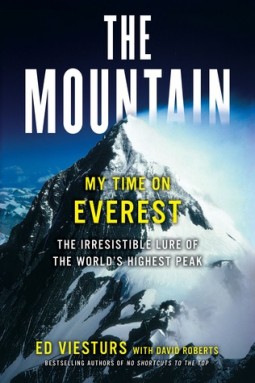This review contains affiliate links, which earn me a small commission when you click and purchase, at no extra cost to you. Thank you for supporting my small business and allowing me to continue providing you a reliable resource for clean book ratings.
I admit I keep going back to reading mountaineering books because of a stunningly gripping and fascinating nonfiction account of one infamous expedition: Jon Krakauer’s Into Thin Air, which covers the 1996 disaster that occurred at Mt. Everest. Since the time a friend introduced that book to me not long after it was published, I’ve snatched up a number of other related books that have come across my “reviewing desk.”
One was about the Sherpas who play such a vital role in Everest expeditions; another was by 1996 “character” Ed Viesturs, who discussed in No Shortcuts to the Top his quest to reach the top of each of the 14 8,000-meter peaks in the world, those that are higher than 26,247 feet above sea level. In Shortcuts, he tells his point of view of what happened on the world’s highest mountain when he was part of the IMAX team that made a safe and successful ascent a week and a half after the tragedy that took so many lives. But he also talks about his personal life and the philosophy that has guided him over so many years of safely going on (and, most importantly, returning from) many high-altitude expeditions.
This second book by Viesturs, again teaming up with fellow climber and writer David Roberts, has the 53-year-old looking back on what is likely a completed climbing career, one “bookended” by trips to Everest, the last of which was in 2009. He talks about his fairly conservative approach to climbing, the rules and guidelines he set for himself over the years, and his opinion that those, along with some luck, have allowed him to continue going home to his wife and four children.
Viesturs intersperses stories of his own expeditions with accounts of some particularly audacious and history-making climbs by other “hard men” over the years, some of which are pretty interesting. After Everest gave up some “firsts” — being climbed for the first time ever, likely by Edmund Hillary and Tenzing Norgay, as well as for the first time by Americans and other nationalities — climbers found new ways to get to the top, taking different routes that hadn’t been used before because of particular difficulty. Viesturs does a pretty good job telling armchair-warrior readers why the use of these routes was so impressive, while still trying to get across that ANY climb of the world’s tallest mountain is always difficult, regardless of how “common” it is becoming.
Even so, I didn’t find this book very gripping; it was informative and interesting, yes, but didn’t generally go into enough detail about each climb to really make it understandable and compelling for non-climbers (those accounts are found elsewhere in detail, for one thing, and this is just a look back at what he considers the “greatest hits,” I would say). But the book is still a great addition to the oeuvre by one of the foremost climbers still alive. It’s hard not to appreciate the poignancy of his last climb and his tender feelings about a dangerous place he’s still visited enough times (15 expeditions totaling the equivalent of two and a half years on Everest) to make him familiar with so much of its terrain. If you’ve also eaten up books about climbing and Everest, this is one still to be read.
Rated: Moderate, for three uses of strong language and some scattered uses of milder language.
Click here to purchase your copy of The Mountain: My Time on Everest on Amazon.




